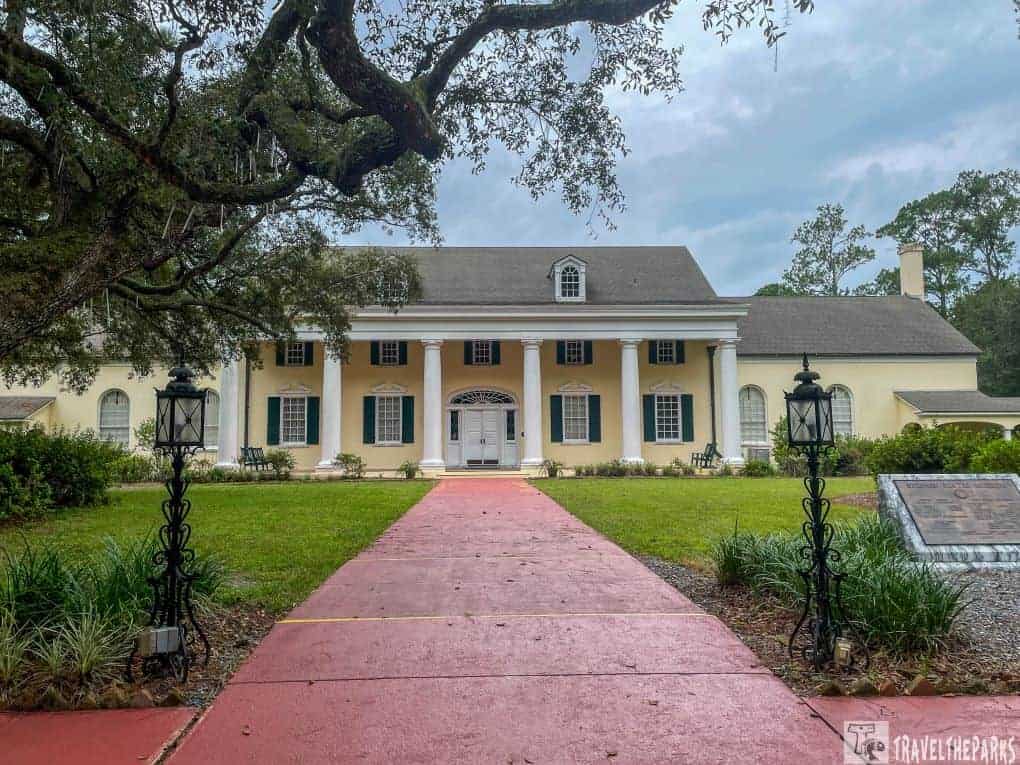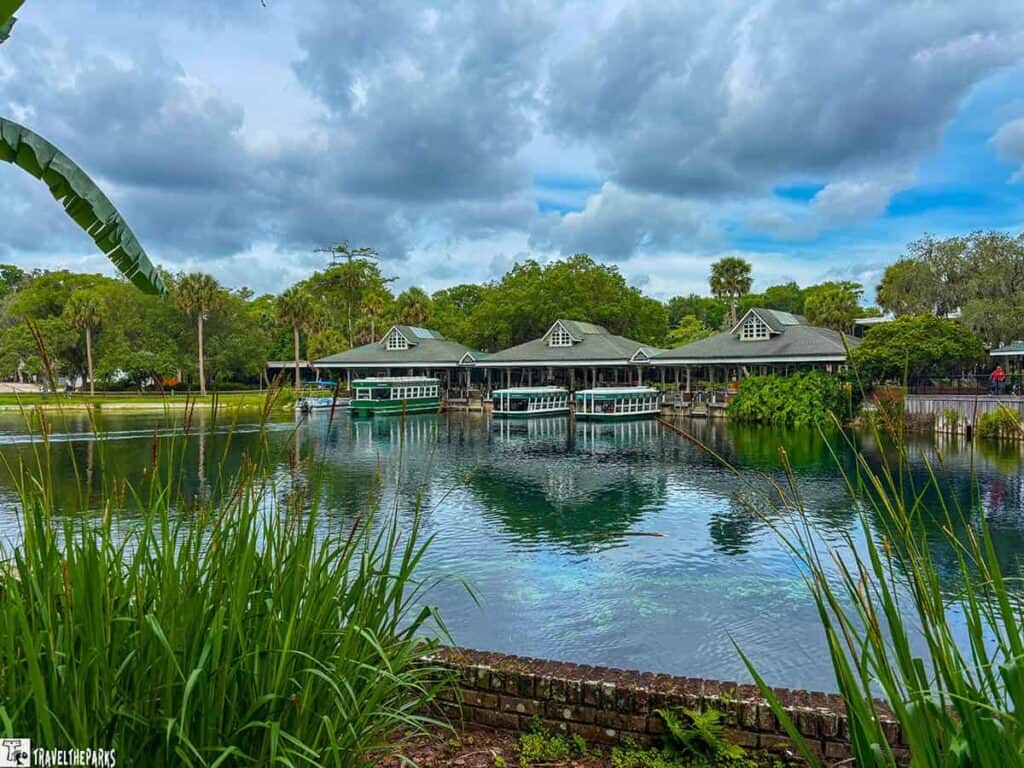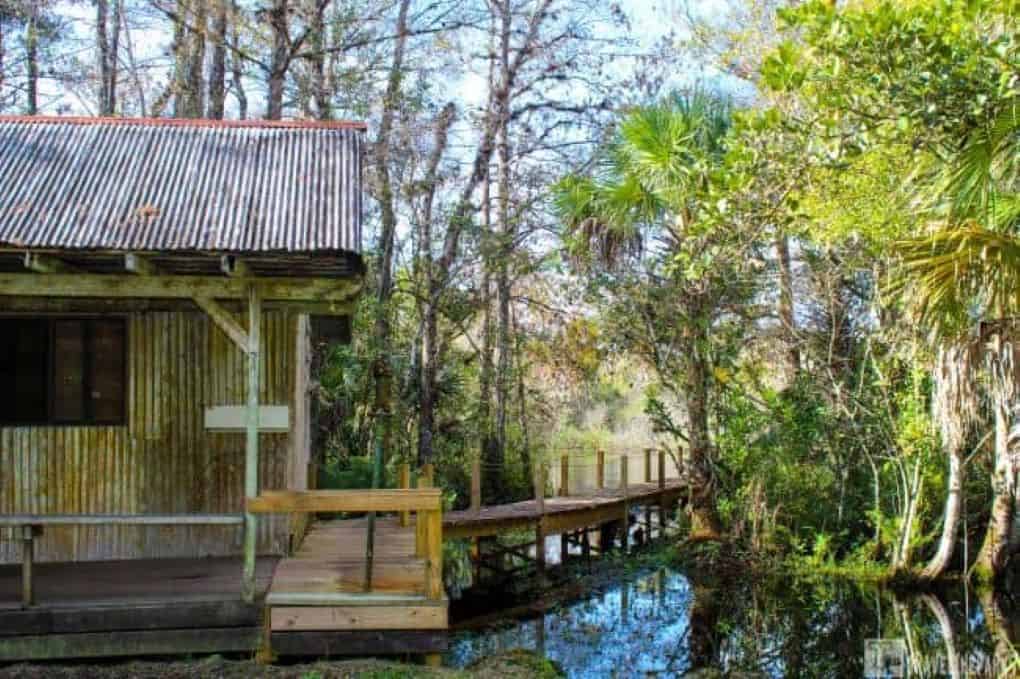During our Florida Nature Coast road trip, we stumbled upon the Stephen Foster Folk Culture Center State Park. In White Springs, Florida, it is a little-known wonder waiting to be explored. Discover the museum, and the iconic Memorial Carillon Tower. This park honors the well-known songwriter Stephen Foster, who produced several songs that became popular in the 1800s. They have a beautiful visitor center and museum, complete with exhibits on Foster’s life and music. The centerpiece of this park is the Memorial Carillon Tower that plays Foster’s melodies. The park features beautiful landscapes, nature trails, and the stunning Suwannee River. It’s a place that families and kids will really enjoy.
This post may contain affiliate links, meaning if you purchase something through one of these links, we may earn a small commission at no extra cost to you! Read the full disclosure policy here.
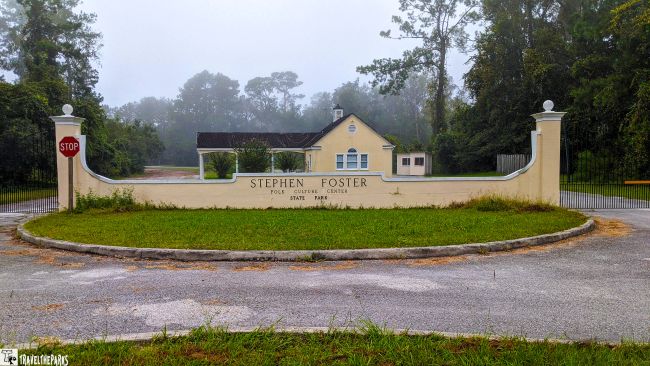
Table of Contents
Useful Information for Visitors to Stephen Foster Folk Culture Center State Park
- Location: The park is in White Springs, Florida, along the banks of the Suwannee River.
- Operating Hours: The park typically operates from 8 a.m. to sunset. Museum & Carillion open daily 9 a.m. to 5 p.m. The gift shop is open daily from 10 a.m. to 5 p.m. Craft Square, visitors can take part in a variety of demonstrations and workshops. Including, quilting, weaving, blacksmithing, jewelry making, and more. Specific hours can vary by season, so it’s best to check the official website before your visit.
- Pets: You can bring your pets to the park. They need to be on a leash no longer than six feet.
- Entrance Fees: The entrance fee for vehicles is $5 (2-8 people). Single vehicle occupant is $4. $2 pedestrians, bicyclists, extra passengers, passengers in vehicle with holder of Annual Individual Entrance Pass.
- Best Time to Visit: The best time to visit is during the spring and fall. This is when the weather is milder, making outdoor activities more enjoyable.
- Accommodation: There is a campground within the park that offers both tent and RV sites. Cabins can also be rented. Nearby towns like White Springs and nearby in Lake City, Jasper, Jennings and Live Oak also have additional lodging options.
- Special Events and Programs: The park hosts various events throughout the year, including music festivals, cultural events, and interpretive programs. For the past 69 years, this site has hosted the Florida Folk Festival. It is the oldest folk festival in America, which takes place annually on Memorial Day weekends.
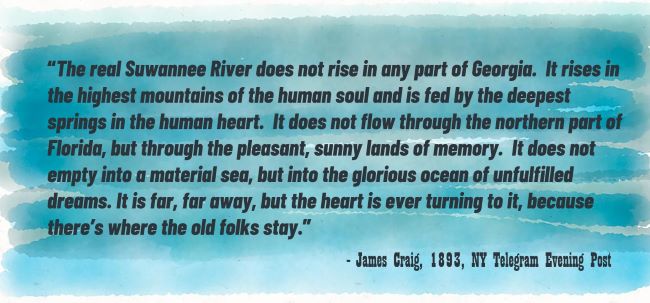
Who was Stephen C Foster?
Stephen C. Foster is the namesake of the park. He’s widely recognized as America’s first great composer. His 19th-century compositions shaped American culture. This keeps his legacy strong. Foster was born in 1826 in Lawrenceville, Pennsylvania. He penned more than 200 top hits. These tunes became part of America’s musical heritage. His music incorporated genres like African American, folk, and minstrel. This blend characterized the sound of the 19th century. Though linked with Southern themes, Foster lived for the most part in Pittsburgh and New York. Unfortunately, he passed away early, at 37 on January 13, 1864.
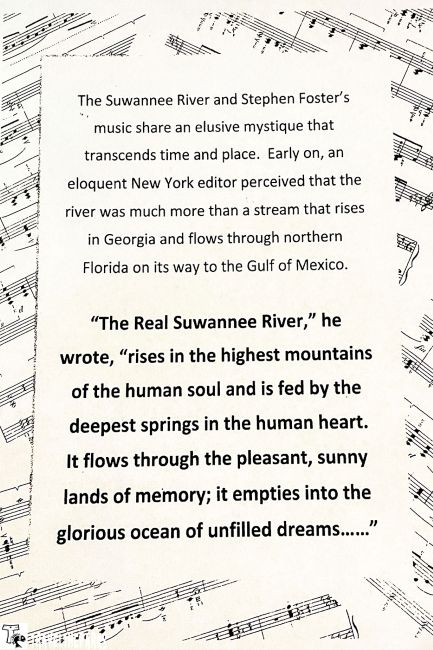
Notable Works Include:
- “Oh! Susanna”: is a lively song that was published in 1848. It quickly gained fame and is often regarded as one of the first true American songs. Its memorable tune and lively words have allowed it to last through the years. Thus, making it a key part of American folk music.
- “Camptown Races”: released in 1850 and is famous for its fun chorus and upbeat tempo. It reflects the excitement of horse racing culture back then and still stays popular today in different versions, including updates in movies and shows.
- “Suwannee River” “Old Folks at Home” (1851) is one of his most well-known songs. It shows how much Foster loved the South even though he never actually lived there. Its sad but lovely tune has connected with audiences for more than a hundred years. It has become a symbol of Southern culture.
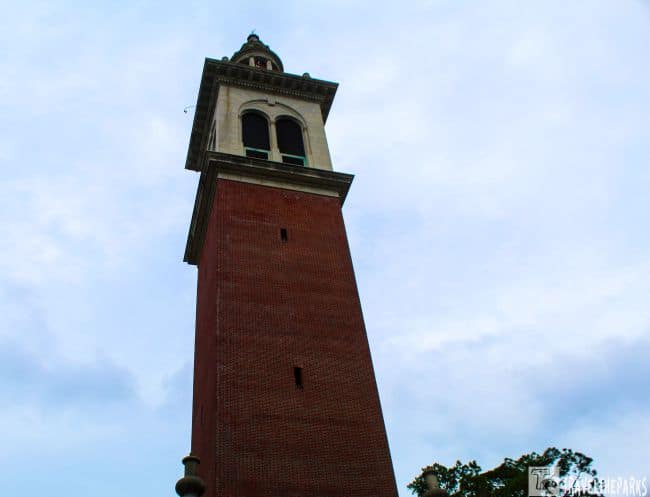
Stephen Foster’s Legacy at the Park: Memorial Carillon Tower
The completion of the bell tower occurred in 1957. In preparation, the Stephen Foster Memorial Commission Members traveled extensively, covering thousands of miles over many months to audition various bell instruments from both Europe and the United States. The rigorous selection process guaranteed the park chose the ideal carillon to reflect its musical identity. The campanile (free-standing tower), stands at an impressive 200 feet. Inside it houses 97 bells, making it one of the largest carillons in the United States. J.C. Deagan, Inc., a Chicago-based manufacturer, constructed the carillon, a significant and ambitious undertaking that cost just under $120,000 – a substantial sum at the time. Deagan’s skilled artisans dedicated over a year to creating this massive set of bells, making it one of the company’s most complex projects in its history.
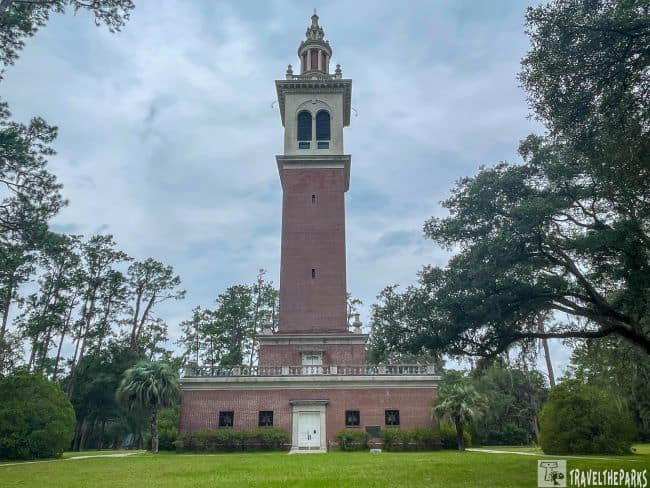
Three sets of 32 bells, each of varying sizes, make up the carillon. The largest bells, tuned to low C, weigh 426 pounds each and measure 12.5 feet long. In contrast, the smallest bells, tuned to high G, weigh only 69 pounds each and are 3.5 feet long. A skilled carillonneur can manually play the bells, or a mechanism can automatically play them at scheduled times, all using powerful electric striking actions.
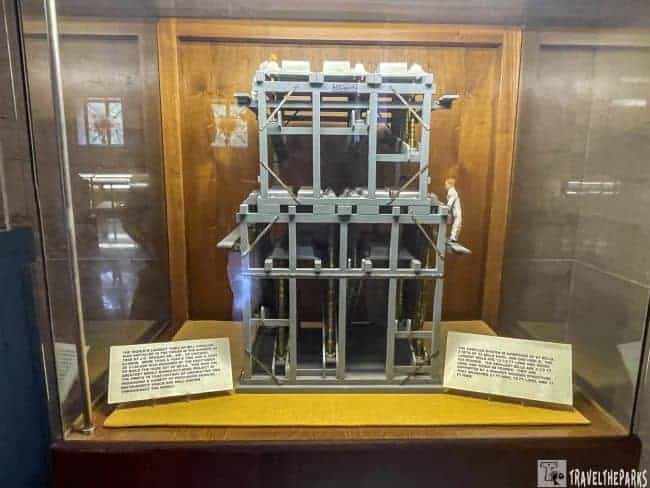
I must say the early 20th century-style carillon stands as a beautiful tribute to composer Stephen Foster. Similar to BOK Tower Carillon in Lake Wales, I just loved how it chimed out selections of his songs as well as other traditional folk tunes every the hour. The melodic ringing of its bells creates a captivating atmosphere that enhances the enjoyment as you stroll through the park.
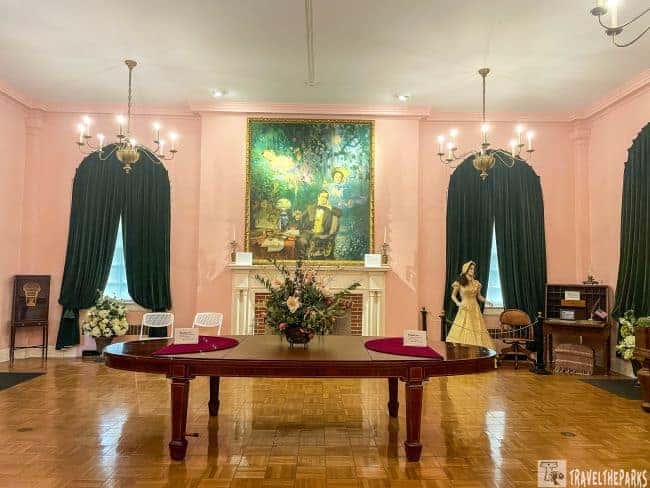
Exploring the Stephen Foster Folk Culture Center Museum: A Journey into American Heritage
The museum at Stephen Foster Cultural State Park, housed in a charming colonial-style building erected in 1950, provides visitors with a deeper understanding of Stephen Foster’s musical legacy and the folk culture of Florida. The museum’s architectural design and picturesque setting immerse guests in the quintessential ambiance of the Deep South, serving as an evocative backdrop for exploring Foster’s influential body of work.
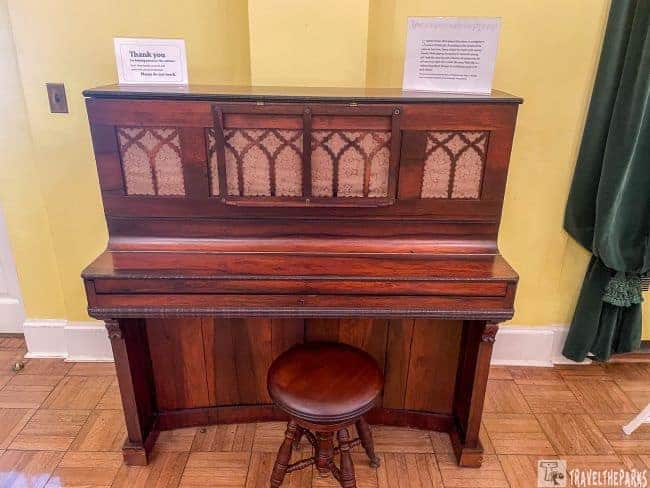
The museum’s highlight for me was exploring eight meticulously crafted dioramas that visually depicted scenes inspired by Foster’s most renowned songs. These immersive displays, first showcased in 1935, brought his music to life by illustrating the narratives and emotions evoked in the lyrics. The exhibits also featured several historic pianos, which underscored the musical heritage of the era.
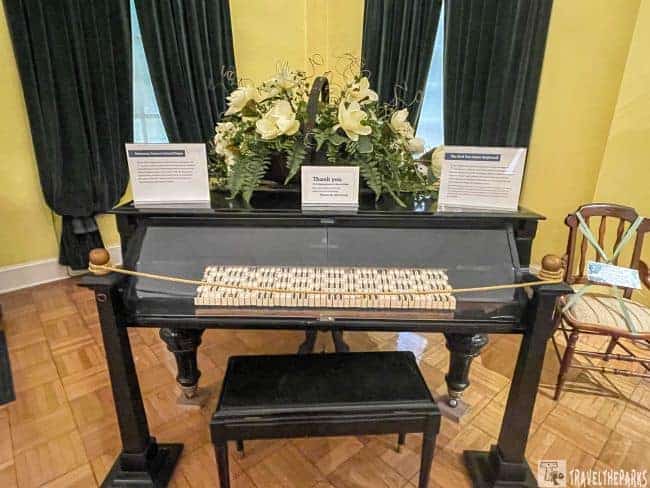
The museum’s most prized artifact is the desk where Stephen Foster penned the final revisions to “Old Folks at Home,” Florida’s beloved state song, also known as “Way Down Upon the Suwannee River.” Composed in 1851, this enduring classic reflects Foster’s deep affection for the American South and has become an iconic symbol of Florida’s cultural heritage.
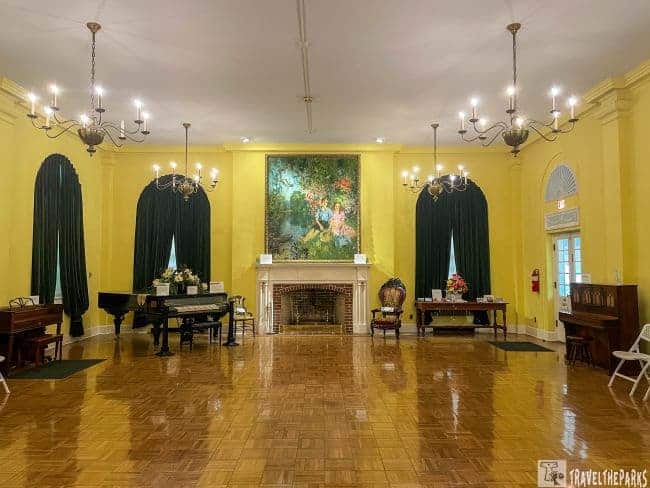
Inside the Stephen Foster Folk Culture Center Museum: A Look at the Stunning Dioramas and Their Creation
When we entered the Stephen Foster Museum, a stunning display honoring America’s famous songwriter welcomed us. There were ten beautiful dioramas that brought his classic songs to life through captivating visual stories. Famous songs such as “Way Down Upon the Swanee River ” “Camptown Races ” “Jeanie With the Light Brown Hair ” and “Oh!” are well-known classics. “Susanna” and “My Old Kentucky Home” come to life with detailed scenes filled with moving parts, lighting effects and realistic details. Each diorama drew us further into the world of Foster’s songs. They mix art with storytelling in a way that seems almost like magic.

The level of skill involved in making these pieces is amazing. A group of 14 artists spent almost two years working hard to finish the first eight dioramas. Each scene took about 1 500 hours of hard work, so the total time added up to 15,000 hours. This is like one artist working full time for over eight years. Each brushstroke gear and tiny figure shows a strong dedication to accuracy paying tribute to Foster’s legacy with the same enthusiasm he put into his music.
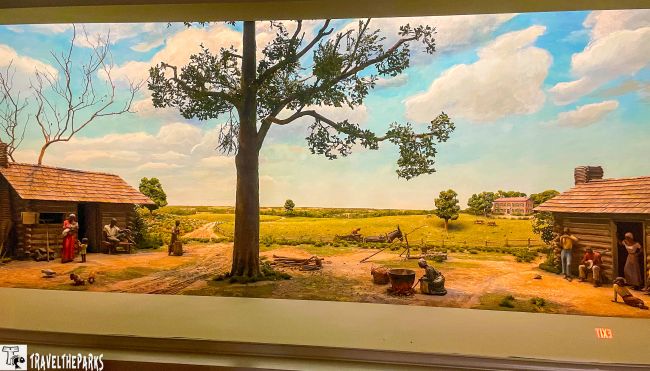
This isn’t merely an exhibit. For me, it illustrates how Foster’s timeless songs continue to inspire us. Because of his talent and dedication, these melodies crafted over a century ago still resonate today. They invite us to see, hear, and immerse ourselves in the narratives that his music conveys.
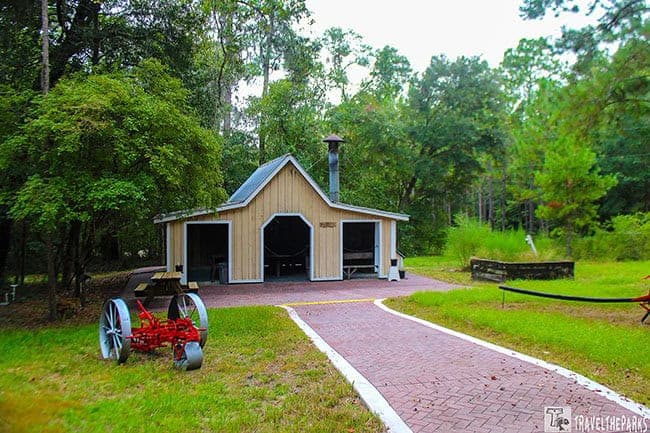
Living History: Florida Folk Festival
The Florida Folk Festival is a yearly event that celebrates the state’s cultural history highlighting traditional music arts and crafts. It was first held in 1953, making it one of the oldest folk festivals in the US. Music is at the heart of the Florida Folk Festival, with performances spanning various genres, including bluegrass, folk, blues, and even traditional Native American music.
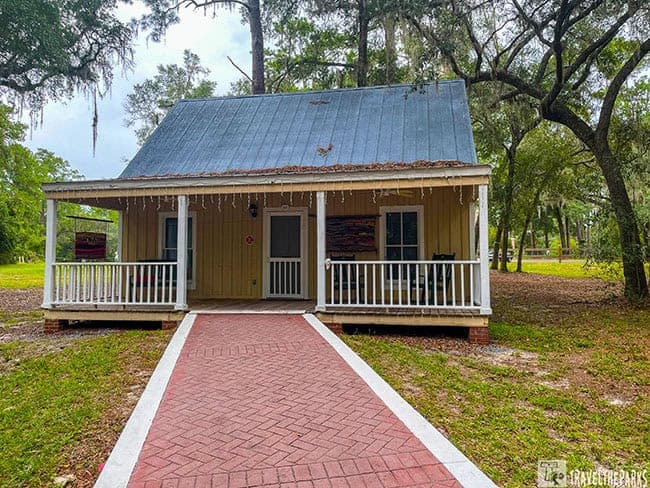
Beyond music, the festival offers workshops, demonstrations, and storytelling sessions, allowing visitors to engage directly with the state’s cultural heritage. Craftspeople display their work in areas dedicated to traditional arts, such as pottery, weaving, and woodworking, showcasing the skills passed down through generations.
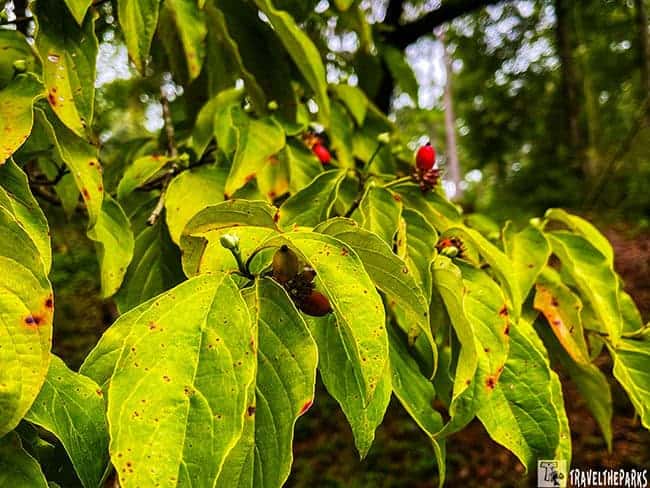
Things to do at Stephen Foster Folk Culture Center State Park
This park offers plenty of activities for visitors of all ages, starting with a well-equipped playground that’s perfect for kids to burn off some energy. Families can enjoy picnic areas nearby, making it easy to spend a relaxing afternoon together. Beyond the playground, the park features scenic walking and biking trails, cultural exhibits near the park store, paddling opportunities on the Suwannee River, and even music from the iconic carillon tower.
Enjoy Kayaking & Fishing the Suwanee River
There’s something enchanting about being the first to disturb a river at dawn. This morning, the Suwannee is draped in a veil of mist. We slip the kayaks into the water almost silently. The only interruption to the silence is the occasional soft tap of our paddles in the tannin-stained water. The disgruntled squawk of a blue heron—likely irritated that I had interrupted its fishing. Ancient cypress trees leaned over the banks, their knobby knees poking up from the water create nature’s own obstacle course.
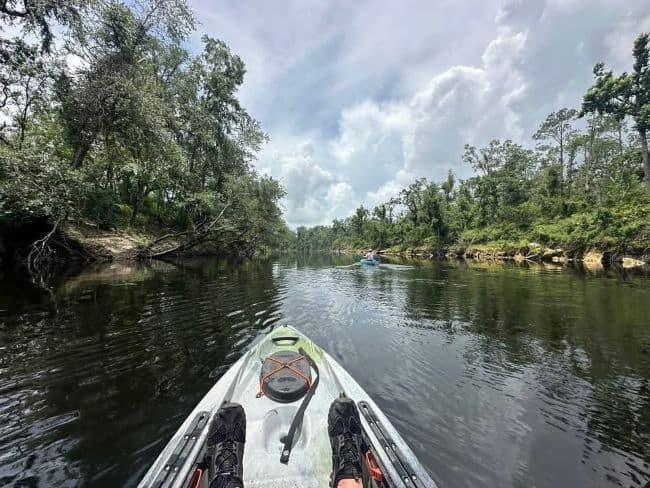
I aimed for a shadowy bend where the current slowed to a lazy swirl. These are the spots bass love to laze in. My first cast filled me with hope. The second, with impatience. But the third? That’s when the river decided to play along.
A sharp jerk nearly yanked the rod from my hands. The kayak wobbled as I scrambled to steady myself. This bass puts up a respectable fight, thrashing at the surface like it had a reputation to uphold. When I finally got a good look at it, I couldn’t help but grin. Not a giant, but a sturdy little fighter—just enough to brighten my morning. I quickly release her back to the river. Out here, the measure of a good catch isn’t inches or weight—it’s the way time slows down. Kayaking the Suwannee is one of the best ways to appreciate the park. You can bring your own or rent one in the gift shop.
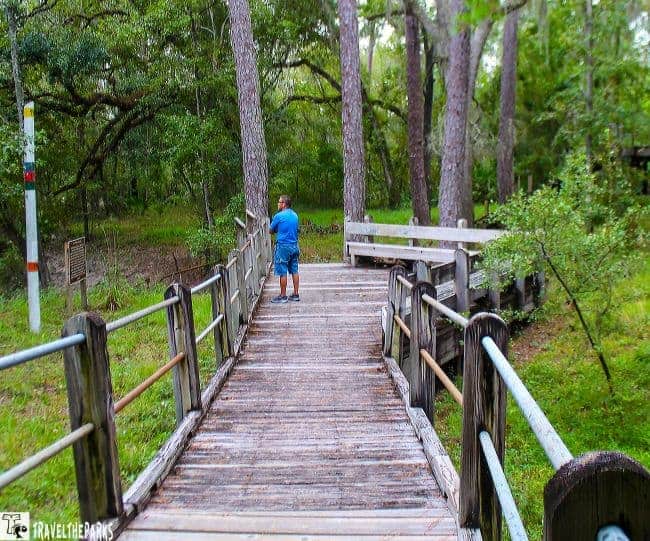
Trails That Show Off the Beauty of the Suwannee
Hike or bike along scenic trails, including the Trail’s End and the River Overlook Trail, which wind through forests and along the Suwannee River. The Trail’s End Trail, approximately 1.5 miles long, takes you deep into a quiet hardwood forest. For a more river-focused experience, the River Overlook Trail follows a high bluff above the Suwannee River, providing beautiful views of the water winding below through moss-draped cypress and oak trees. Trail surfaces vary from packed dirt to boardwalks.
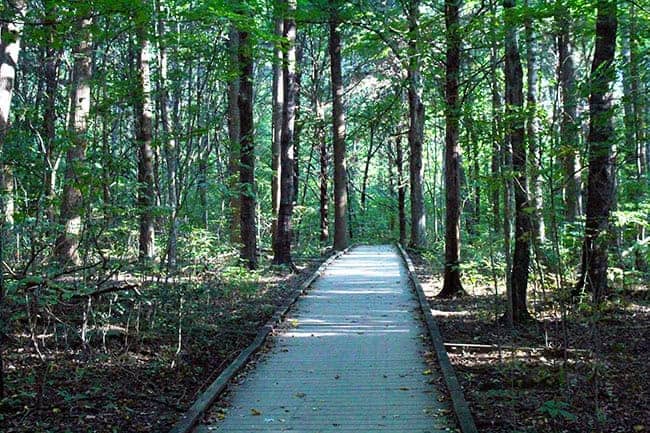
The Hammock Loop Trail at Stephen Foster Folk Culture Center State Park provides a fun biking experience for cyclists of all abilities. This 8-mile out & back trail goes through pine forests where tall oak trees and swaying palm trees form a shady roof above. We combined it with the Florida National Scenic Trail to make a loop.
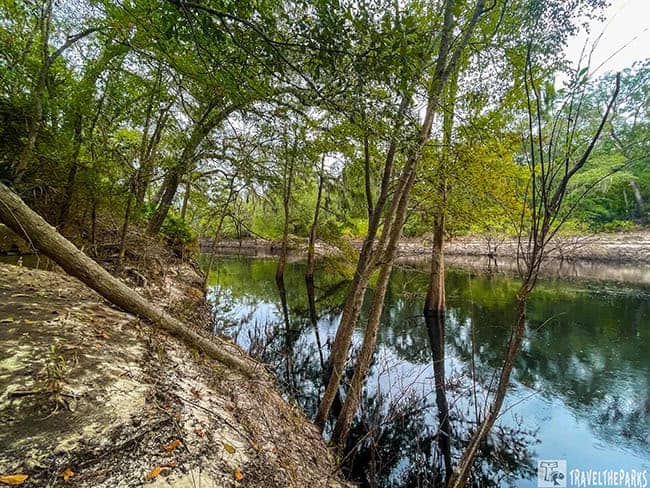
As we pedaled along the trail, we kept our eyes open for wildlife in the area. We saw a few deer and heard plenty of birdsong. You may even see the occasional fox on this trail. This trail is perfect for a leisurely ride.
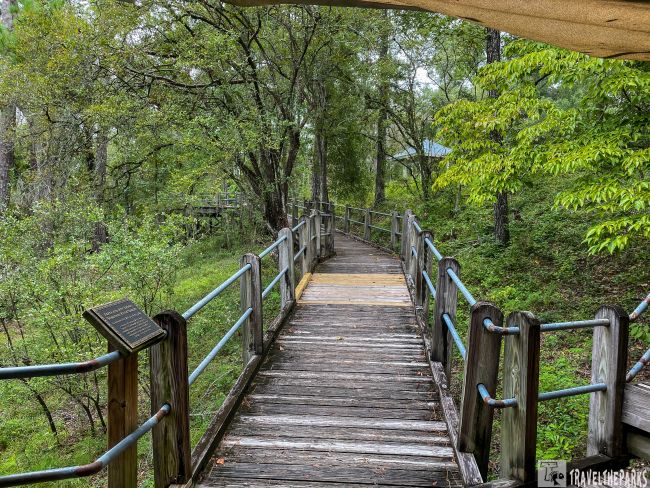
Though we did encounter slight rises, they introduce just enough challenge to keep things interesting. Along the way, interpretive signs gave us information on the natural and cultural history of the area linking the landscape to the musical heritage of the park. A bicycle ride on the Hammock Loop Trail is a great way to experience the peaceful beauty of this offbeat Florida state park.
What to Bring with When Hiking the Park Trails
For hiking at Stephen Foster Folk Culture Center State Park, wear sturdy, waterproof shoes and dress in layers, as trails can be muddy or damp. Bring plenty of water, energy snacks, insect repellent, sunscreen, and a trail map or GPS. A small first aid kit, flashlight, and dry bag are also helpful. Long pants are recommended to protect against ticks and mosquitoes, and a hiking stick can help on uneven terrain.
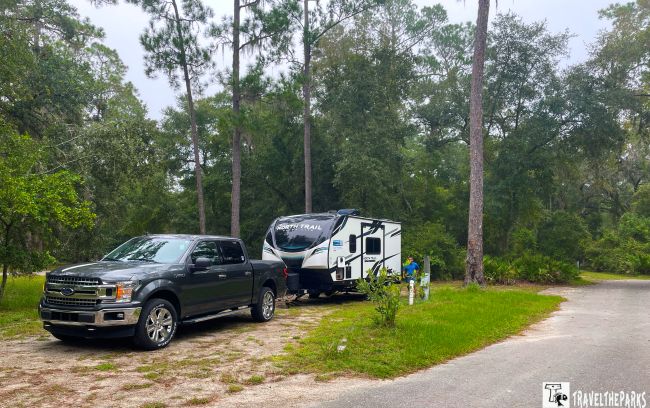
Camping at Stephen Foster Folk Culture Center State Park
I was lucky and found this campground while driving through Georgia during our fall road trip. It was a delightful surprise. I had only booked a two nights stay, but we left wishing we’d stayed longer. Particularly, the 45 RV gravel sites were spacious. Most feel private, hidden among trees. I have to say the best asset of this campground is how quiet at night it is. Really feels like a true escape from the busyness of everyday life.
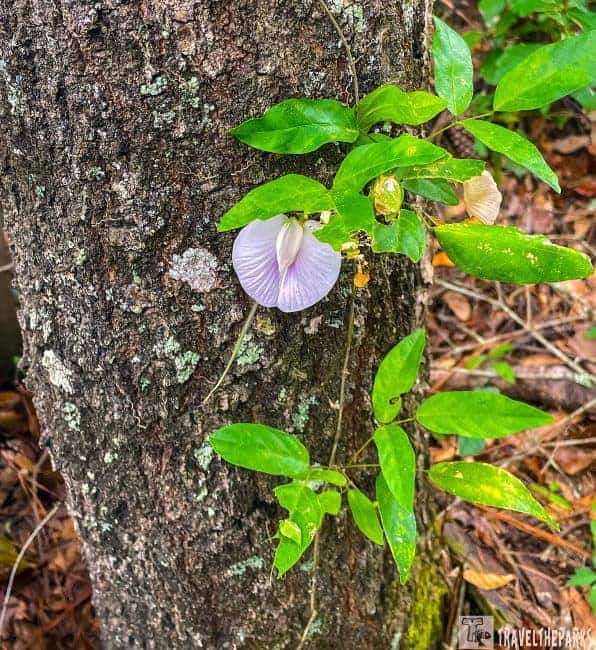
Another outstanding feature is how close the campground was to the park’s trails and river access. It was easy to start our mornings walking the dog on the short trails. A separation exists between the campground and the museum and visitor’s center. The park has five cabins for rent as well.
The facilities were spotless—real showers with hot water, flush toilets, and a convenient dump station that made departure a breeze. This is a park I will keep on our favorite list for sure!
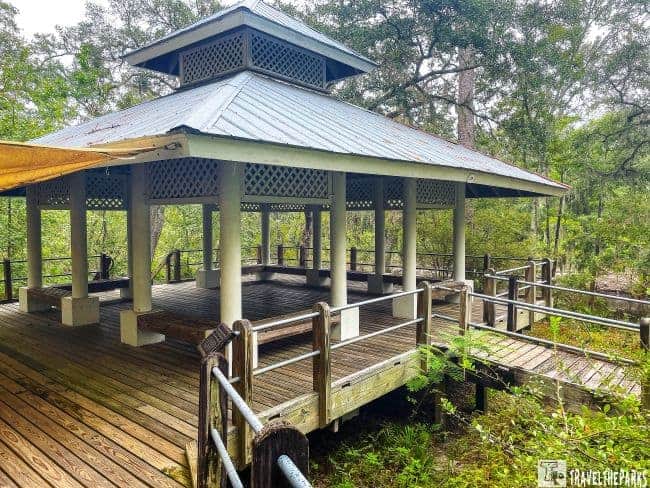
Final Thoughts: Unique Hidden Gem: Stephen Foster Folk Culture Center State Park
Stephen Foster Folk Culture Center State Park is one of those rare places. Every corner of the park reflects a deep connection to Florida’s folk heritage. This park it tells a story. From the echoing chimes of the carillon tower to the quiet flow of the Suwannee River, every corner of this park feels like a love letter to Stephen Foster. The park is one of Florida’s best-kept secrets. I encourage everyone to wander the moss-draped paths of Stephen Foster Folk Culture Center State Park or join the lively crowds at the Florida Folk Festival at least once. We are sure you will love it as much as we did!
Have you visited? Share your favorite memory in the comments!

